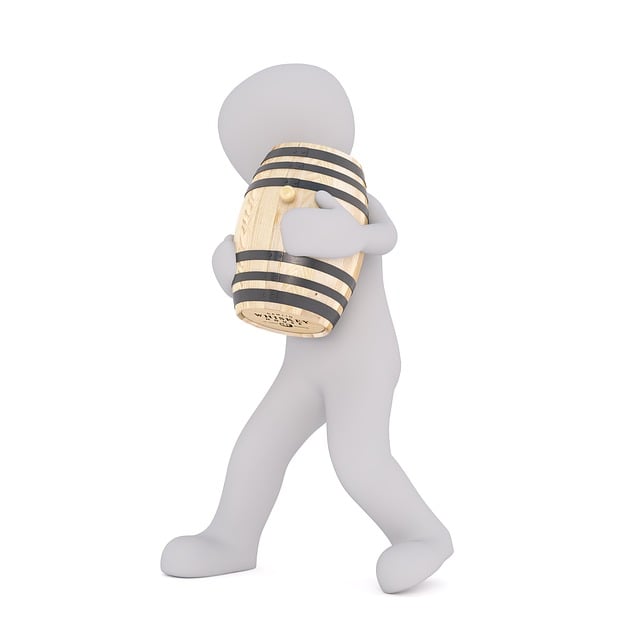Advanced technologies like termitometers, heat sensors, infrared cameras, satellite imagery, drones, RF sensors, acoustic sensors, AI-powered analysis, and drones are transforming professional termite extermination. These innovative tools enable early detection of hidden infestations by measuring temperature variations, identifying moisture levels, tracking movement and sounds, analyzing vegetation patterns, and recognizing structural changes. By integrating these technologies, professionals can offer more proactive, effective, and non-invasive termite extermination services, enhancing structural integrity and saving homeowners time and money.
In the realm of professional termite extermination, staying ahead of these relentless pests requires more than traditional methods. Advanced technologies are transforming the way we detect termite activity, offering precise and early warnings. From heat sensors and infrared technology that unveil hidden tunnels, to radio frequency (RF) and acoustic sensors monitoring movement and sound, this innovative arsenal provides unparalleled insights. Furthermore, satellite imaging coupled with AI-powered analysis promises a game-changer in pest management, ensuring swift and effective control measures.
Traditional Methods vs Advanced Technologies for Termite Detection
In the realm of termite control, detecting their presence is half the battle won. Traditional methods, such as visual inspections and sniffing dogs, have long been employed by professionals in termite extermination. While effective to some extent, these techniques often rely on visible signs or strong scents, which might not always be apparent. Termites are elusive creatures, burrowing deep into structures, making their activities hard to detect until significant damage occurs.
Advanced technologies have emerged as game-changers in this field. Innovations like termitometers, heat sensors, and infrared cameras can now pinpoint termite activity with remarkable accuracy. These tools offer non-invasive methods to scan through walls, floors, and other hidden areas, providing early warning signs of an infestation. Moreover, remote sensing techniques using satellite imagery and drones are being explored for large-scale surveillance, offering a proactive approach to professional termite extermination services.
Heat Sensors and Infrared Technology: Unveiling Termite Tunnels
Heat sensors and infrared technology are transforming the way professionals approach termite extermination. These advanced tools allow for non-invasive detection methods, providing a more comprehensive view of termite activity beneath the surface. By measuring temperature variations, heat sensors can pinpoint areas where termites have created intricate tunnel networks. This is particularly useful in identifying hidden infestations that might go unnoticed through traditional visual inspections.
Infrared technology further enhances these capabilities by generating thermal images that highlight discrepancies in wood moisture levels, a telltale sign of termite presence. This innovative approach enables exterminators to uncover extensive tunnel systems and locate the source of an infestation more accurately. As a result, heat sensors and infrared technology are invaluable assets in the professional termite extermination arsenal, ensuring more effective and efficient treatments.
Radio Frequency (RF) and Acoustic Sensors: Monitoring Movement and Sound
Radio Frequency (RF) and Acoustic Sensors are transforming the way professionals approach termite extermination. These advanced technologies offer a non-invasive method to monitor termite activity by tracking both movement and sound. RF sensors emit radio waves that can detect changes in moisture levels, a key indicator of termite presence, as they move through wood structures. Similarly, acoustic sensors pick up on the distinctive sounds termites make while feeding and burrowing, providing early warning signs of an infestation.
By integrating these sensors into building frameworks during construction or retrofitting existing structures, professionals can proactively identify termite problems before significant damage occurs. This proactive approach to termite control not only saves time and money but also enhances overall structural integrity, ensuring peace of mind for homeowners and the effectiveness of professional termite extermination services.
Satellite Imaging and AI-Powered Analysis: Early Detection from Above
Satellite imaging and AI-powered analysis are transforming the way we detect termite activity, offering a proactive approach to professional termite extermination. By utilizing advanced remote sensing technologies, satellites can capture high-resolution images of large areas, providing a comprehensive view of potential termite infestations. These images are then processed using artificial intelligence algorithms that can identify subtle changes in vegetation patterns and structural integrity, often indicators of termite damage.
AI models are trained on vast datasets to recognize specific features associated with termite activity, such as mud tubes, hollowed-out wood, or distinctive patterns of tree mortality. This technology enables early detection, allowing pest control professionals to take swift action before infestations spread. With its ability to cover vast territories efficiently and provide continuous monitoring, satellite imaging paired with AI analysis is a game-changer in the battle against termites, ensuring more effective and preventive measures for professional termite extermination services.
Advanced technologies are transforming the way we detect termite activity, offering more precise and efficient solutions compared to traditional methods. Heat sensors, infrared technology, radio frequency (RF) and acoustic sensors, satellite imaging, and AI-powered analysis each bring unique capabilities to the table, revolutionizing professional termite extermination efforts. By leveraging these innovative tools, pest control specialists can now identify hidden termite infestations early on, leading to more effective and targeted treatment strategies. This shift towards advanced technologies promises a future where termite management is both proactive and highly successful.
